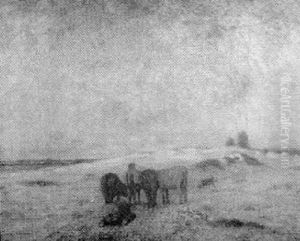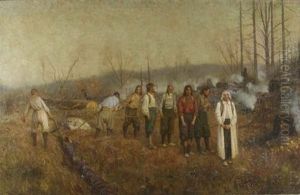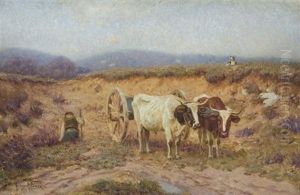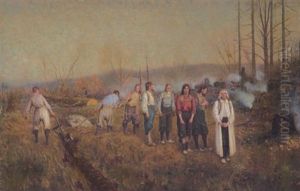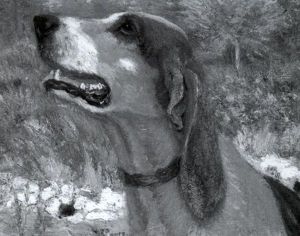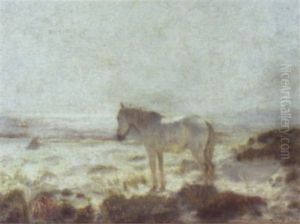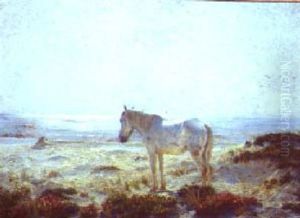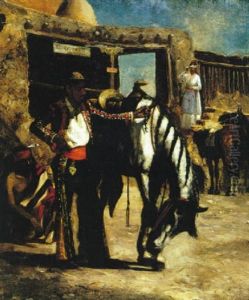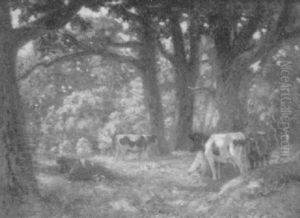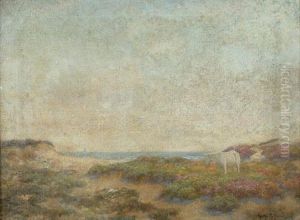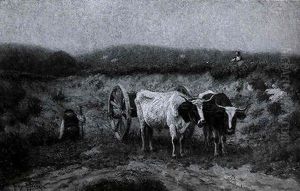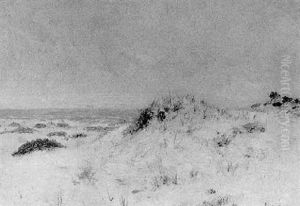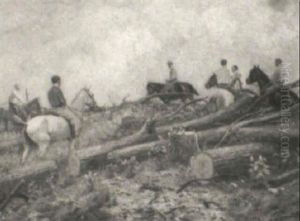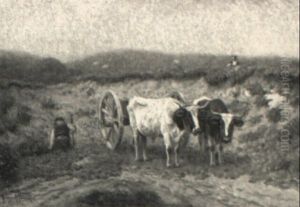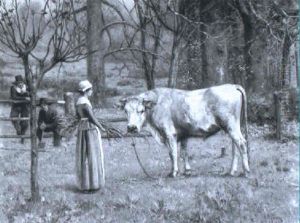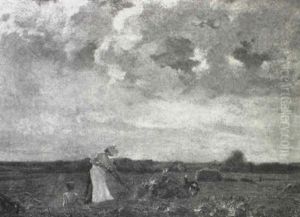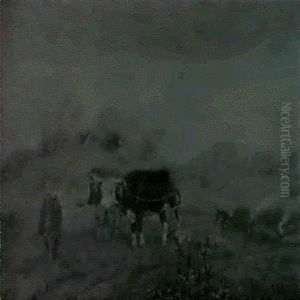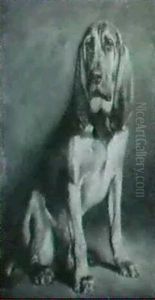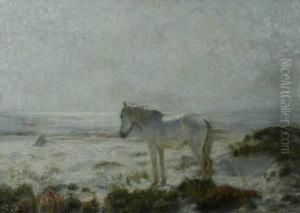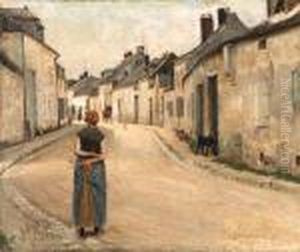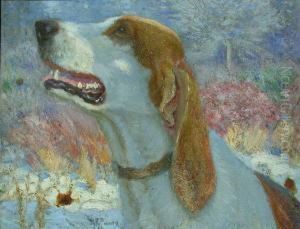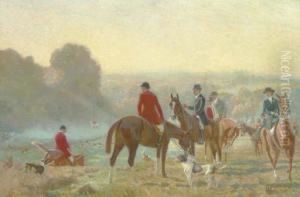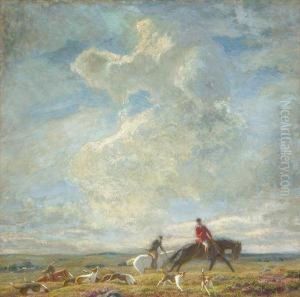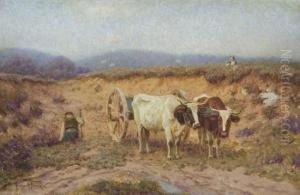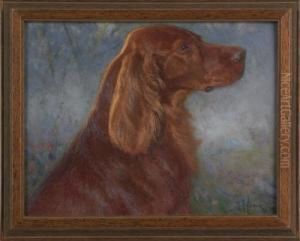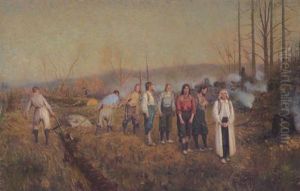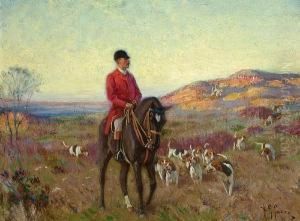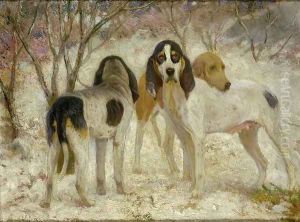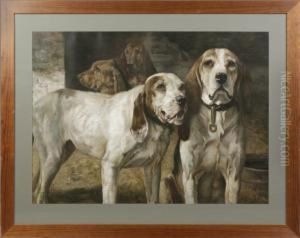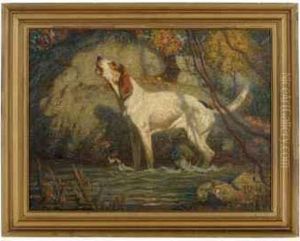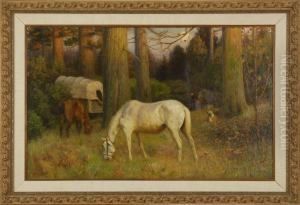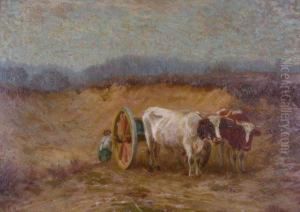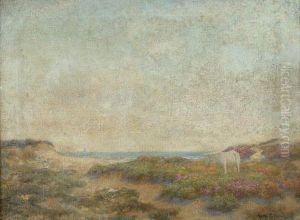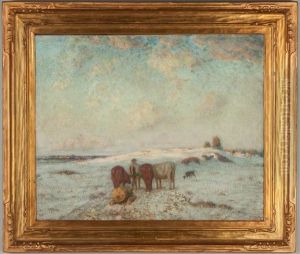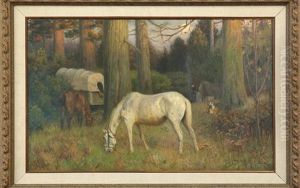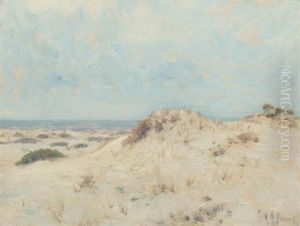Henry Rankin Poore Paintings
Henry Rankin Poore was an American painter, writer, and teacher known for his contributions to American art in the late 19th and early 20th centuries. Born on January 16, 1859, in Newark, New Jersey, Poore was raised in a cultural environment that fostered his artistic talents. He studied in the United States and abroad, attending the Pennsylvania Academy of the Fine Arts, and later continued his education in Paris at the Académie Julian under the tutelage of notable artists such as Gustave Boulanger and Jules Lefebvre.
Poore's artistic style was primarily influenced by the tonalist and impressionist movements, and he created works that often depicted landscapes, genre scenes, and animal subjects. He had a particular affinity for painting domesticated animals, which became a significant theme throughout his career. He was also a skilled illustrator and contributed to various publications during his lifetime.
In addition to his painting, Poore was an accomplished writer and art critic. He authored several books and articles on art theory and practice, including 'Pictorial Composition and the Critical Judgment of Pictures' and 'The Conception of Art.' His contributions to art literature were well-regarded, and he became a respected voice in the art community.
As an educator, Henry Rankin Poore taught at various institutions, including the Pennsylvania Academy of the Fine Arts and the Art Students League of New York. He influenced many young artists through his teaching and writings, emphasizing the importance of composition and design in visual art.
Throughout his career, Poore exhibited his work widely, participating in exhibitions at venues such as the National Academy of Design, the Pennsylvania Academy of the Fine Arts, and the Art Institute of Chicago. His artworks are part of several museum collections, including the Metropolitan Museum of Art in New York.
Henry Rankin Poore's legacy is that of a multifaceted artist who contributed to the American art scene not only through his paintings but also through his teachings and writings. He passed away on June 22, 1940, leaving behind a body of work that continues to be appreciated for its compositional strength and its portrayal of American life and landscapes.
